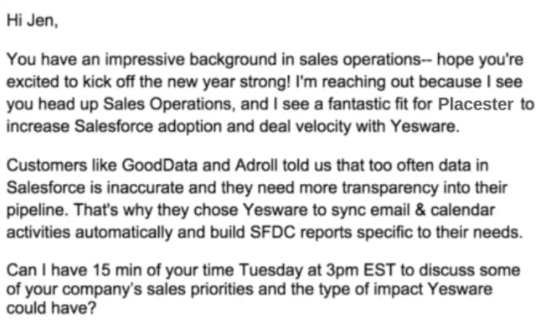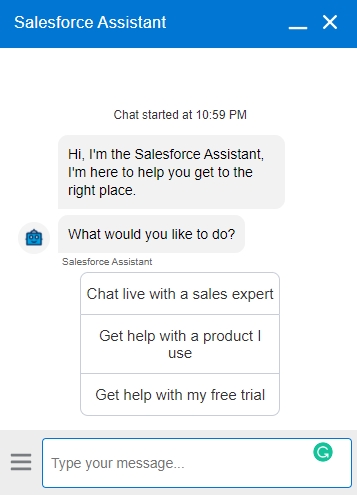A vast majority of B2B marketing teams have started to automate many (if not most) of their workflows because it’s a proven way to increase efficiencies without sacrificing effectiveness. B2B sales teams, on the other hand, have been slower to adopt automation. That’s because the B2B sales process still requires a bit of a human element to make it work effectively.

Why You Need to Humanize Your B2B Sales Process
B2B sales teams have been slow to adopt automation because they understand that people are still crucial in the sales process. If you ignore this fact, then your sales team will fail. Here are the reasons why:
You Can’t Automate a Genuine Relationship
An essential element of the B2B sales process is building relationships with potential customers. Your consumers want to know that you understand their needs and can level with them personally. 84% of B2B buyers are more likely to buy from sales reps who understand their needs/goals. Artificial intelligence may be able to learn and make educated suggestions, but a computer will never be able to understand or empathize with your consumers the same way you can.
You Can’t Automate Trust
When you’re trying to build trust with your potential customers, you need to show that you understand their needs. You can’t do that with a computer. Potential customers want to know that you have their best interests in mind. They don’t want to feel like you’re just trying to push a product on them or take advantage of them.
Studies show that only 3% of B2B buyers trust sales reps. However, these individuals still seek out interactions with a sales rep during three vital stages of the buying journey:
- 19% during the awareness stage
- 60% during the consideration stage
- 20% during the decision-making stage
5 Elements of the B2B Sales Process That Need a Human Touch
While there is a time and place for automation in the B2B sales process, a few elements still require that human touch. Here are the five elements of the B2B sales process that you should never fully automate:
1. Prospecting
Prospecting for new leads is a vital part of the sales process because it helps you build your pipeline and stay top-of-mind with your potential customers. Sure, some prospecting tasks can be automated, such as lead verification. However, if you automate the entire prospecting process, you run the risk of sending out irrelevant messages or being perceived as spam.
For example, you can’t fully automate the processes of building consumer profiles. While this process can be partially automated, it relies heavily on data collected from your interactions with your potential customers. These interactions include phone conversations, meetings, and social media interactions – all of which require human interaction.
2. Initiating Connections
Connecting with potential customers through automated messages may seem like the most efficient and effective way to build your list of leads. However, these messages can sometimes come off as spammy or impersonal. Subsequently, they can damage your brand’s credibility and cause your leads to disengage with your messages.
A great example of when you shouldn’t send an automated message is conducting cold email marketing as part of your prospecting activities. Many B2B sales teams reach out to potential leads to initiate a business relationship. If you’re sending out an automated email, it’s easy to tell. This message often lacks personalization, which is a big turn-off to consumers and can come off rather robotic in nature. You want to always make sure you are taking the time to personalize your messages to stand out to the specific individuals you are speaking to.

3. Demonstrating Value
When you’re trying to demonstrate value to your potential customers, they want to hear it from a person and not a computer. If you try to automate this process, your potential customers will feel as though they’re just another number on a list. This can have a negative impact on your brand’s credibility and cause your leads to disengage with your messages.
4. Negotiating Terms
Negotiating terms is a crucial part of the sales process because it helps you finalize your business relationship’s details. If you try to automate this process, you risk missing an important detail or misinterpreting the information you’re receiving. This can lead to a breakdown in communication, which will ultimately lead to a failed business relationship.
5. Closing the Deal
Closing the deal is the final step in the B2B sales process. However, it’s not something that you can automate. Closing the deal requires a human element because it involves a personal conversation between you and your potential customer. This conversation helps you finalize the details of your business relationship and gives you the opportunity to ensure that you’re providing a truly valuable solution to your potential customers.
Aspects of Your B2B Sales Process You Should Automate
While the entire B2B sales process shouldn’t be automated, many areas can and do benefit from automation, including:
Lead Scoring
Lead scoring helps sales reps to prioritize their time and resources by focusing on the leads that are the most likely to convert. This process can be automated by using a software solution that collects data from your interactions with your potential customers. The software then analyzes this data to determine the likelihood of a prospect converting into a customer.
Follow-up Messages
One of the most common ways to automate the B2B sales process is using follow-up messages. These messages are sent to your leads after they engage with your company (e.g., they visit your website, download your content, etc.). These messages are designed to help you nurture your relationship with that prospect and increase the likelihood of a conversion.
Chatbots and Virtual Assistants
Chatbots and virtual assistants are becoming increasingly popular because they make it easier for your prospects to interact with your company. These tools are an excellent resource for providing your B2B consumers with quick responses to frequently asked questions. If the bot can’t answer their questions, the individual can be forwarded directly to a sales agent to ensure they get the answers they need.

Lead Quality Assurance with Hushly
Are you looking for a superior lead quality assurance solution that can help you increase the number of sales-ready leads in your pipeline? If so, check out the Hushly Lead Quality Assurance solution.
Hushly’s Lead Quality Assurance solution collects the information your lead enters into your forms and checks it against the individual’s LinkedIn profile to validate it before sending it to your automated marketing platform – helping you deliver high-quality leads to your sales team.
Ready to see what Hushly can do for you? Request your custom experience today!

